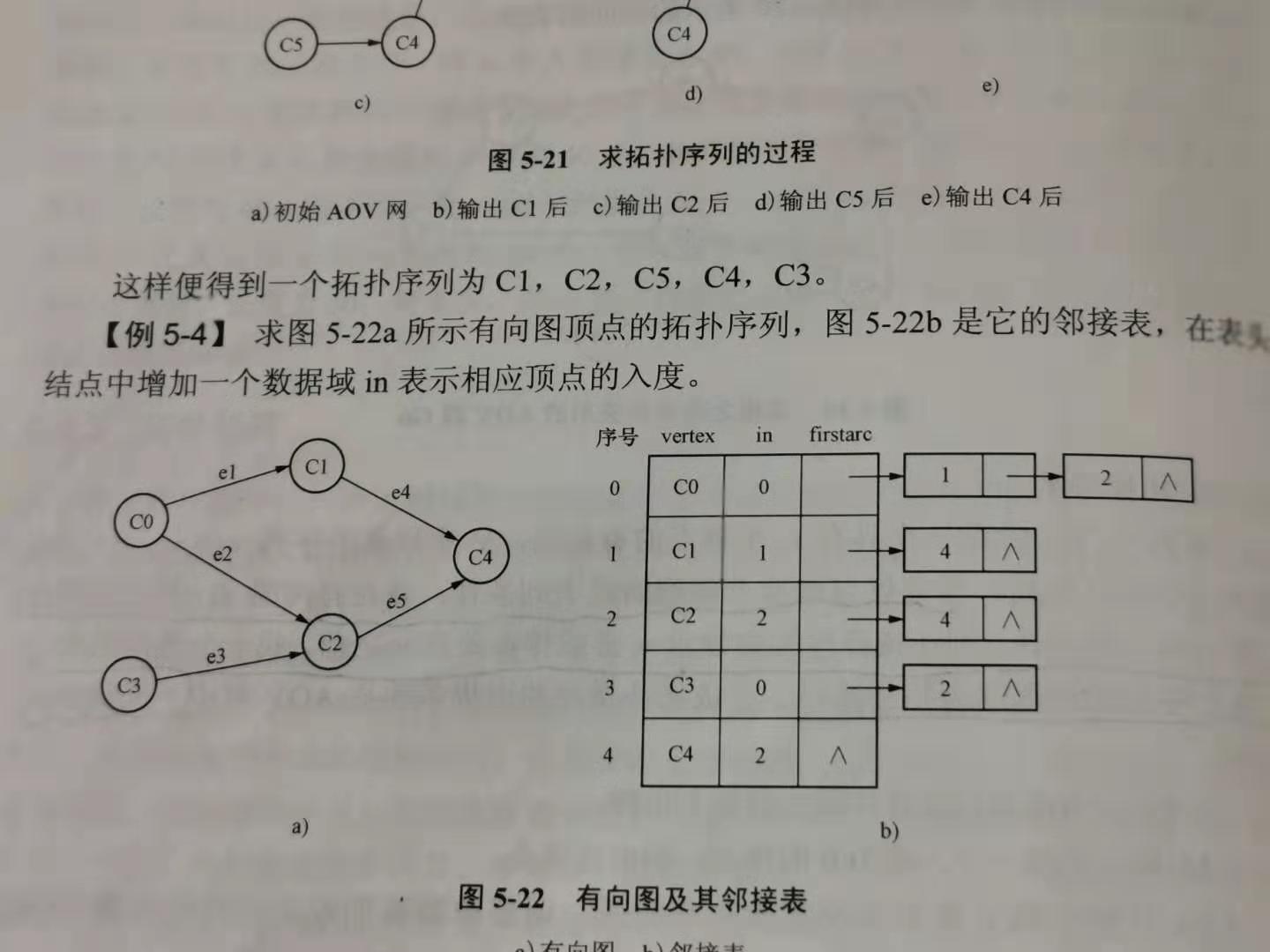
源程序:在vc++6.0中运行通过
// c0,c1,c2,c3,c4四个结点,在程序中和0,1,2,3,4来表示
// main.cpp
// top_sort
//
// Created by duanqibo on 2019/12/20.
// Copyright © 2019年 duanqibo. All rights reserved.
//
#include <stdio.h>
#include <stdlib.h>
const int vnum=20;
typedef struct node //定义栈结构
{
int data;
struct node *next;
}*LkStk,LkStack;
typedef struct arcnode
{
int adjvex;
struct arcnode *nextarc;
//OtherInfo info;
}ArcNode;
typedef struct vexnode
{
char data;
struct arcnode *firstarc;
}VNode, AdjList[vnum];
typedef struct gp
{
AdjList adjlist; //vertices;
int vexnum, arcnum;
}Graph;
//并声明一个int 类型的indegree[]数组,初始化为0:
int indegree[vnum] = { 0 };
//用于记录下标节点的入度。
//入栈函数:
LkStk Push(LkStk S, int e)
{
LkStk p;
p = (LkStk)malloc(sizeof(LkStack));
p->data = e;
p->next = S;
S = p;
return S;
}
//出栈操作
LkStk Pop(LkStk S, int *e)
{
LkStk p;
p = S;
//if (!p)
// return NULL;
*e = p->data;
S = S->next;
free(p);
return S;
}
int LocateVex(Graph *G, char v)
{
int i;
for (i = 0; i < (G->vexnum); i++)
{
if (v == G->adjlist[i].data)
return i;
}
}
void CreateUDG(Graph *G)
{
int i, j, k;
char v1, v2;
ArcNode *p1;
printf("输入总节点数和总边数:");
scanf("%d%d", &G->vexnum, &G->arcnum);
fflush(stdin);
printf("输入各个节点的值:");
for (i = 0; i < G->vexnum; i++)
{
scanf("%c", &G->adjlist[i].data);
G->adjlist[i].firstarc = NULL;
}
for (k = 0; k < G->arcnum; k++)
{
fflush(stdin);
printf("输入一条边的两个节点:");
scanf("%c %c", &v1, &v2);
i = LocateVex(G, v1);
j = LocateVex(G, v2);
p1 = (arcnode *)malloc(sizeof(arcnode));
p1->adjvex = j;
p1->nextarc = G->adjlist[i].firstarc;
G->adjlist[i].firstarc = p1;
indegree[j]++;
}
}
//注意在创建图过程中记录节点的入度。
//拓扑排序算法:
int TopologicalSort(Graph G, int *topo)
{
int i, m, k;
LkStk S;
ArcNode *p;
S = NULL;
for (i = 0; i < G.vexnum; i++)
{
if (!indegree[i])
S = Push(S, i);
}
m = 0;
while(S)
{
S = Pop(S, &i);
topo[m] = i;
++m;
p = G.adjlist[i].firstarc;
while (p != NULL)
{
k = p->adjvex;
--indegree[k];
if (indegree[k] == 0)
S = Push(S, k);
p = p->nextarc;
}
}
topo[m] = -1;
if (m < G.vexnum)
return 0;
else
return 1;
}
//主函数
int main(void)
{
Graph G;
int i;
int topo[99] = { 0 };
CreateUDG(&G);
if (TopologicalSort(G, topo))
{
for (i = 0; topo[i] != -1; i++)
{
printf("%c ", G.adjlist[topo[i]].data);
}
}
else
printf("错误");
printf(" ");
system("pause");
return 1;
}
运行结果:
